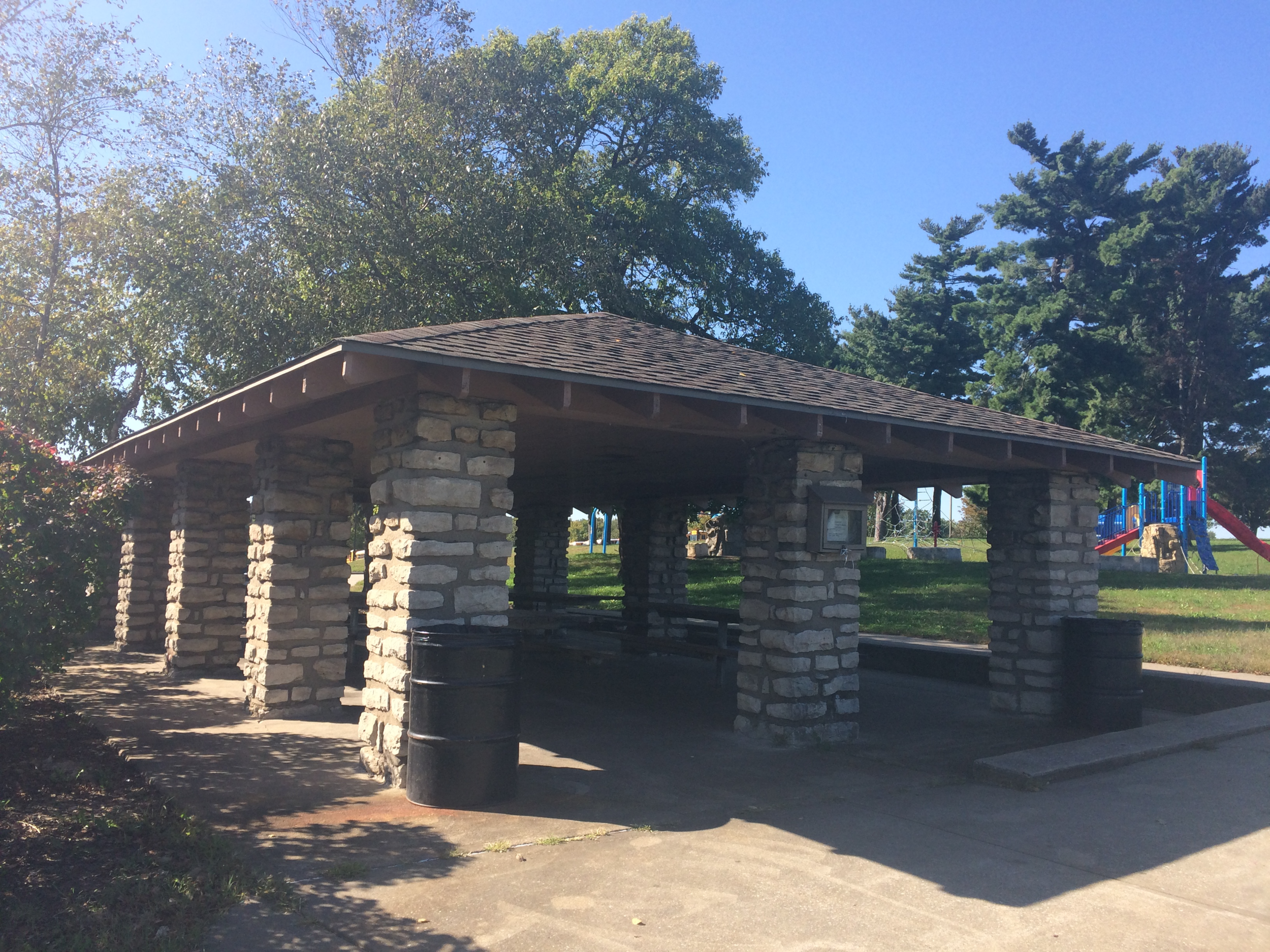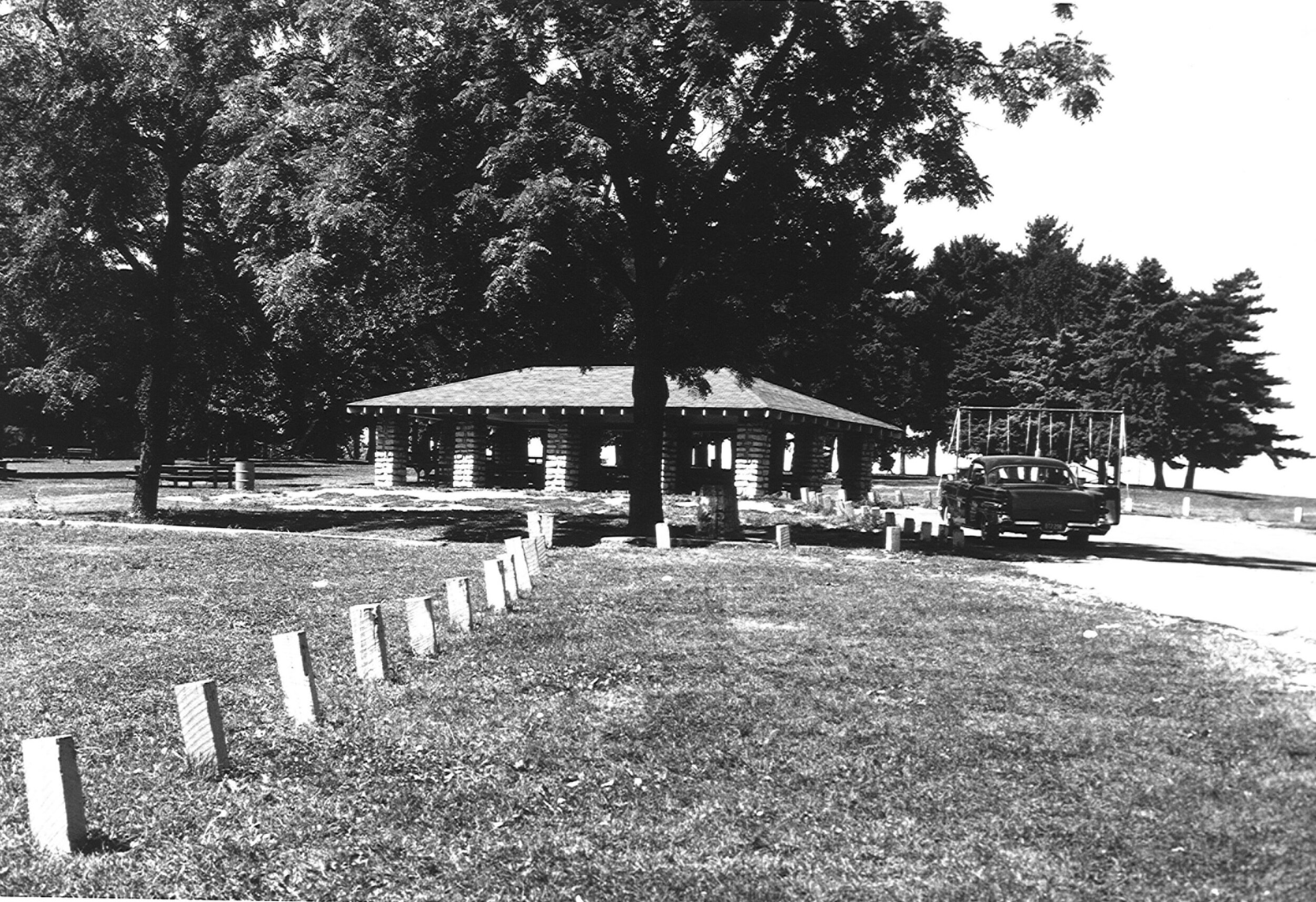
swope park Shelter #5
6700 Zoo Drive
Swope Park Shelter #5
There is little architectural distinction to be found in this modest and unassuming structure tucked discreetly between Starlight Theater and the Kansas City Zoo in Swope Park. But, from its construction in the early 1940’s up until the mid 1950’s, it was significant to Kansas City’s African American community for one very important reason: it was the only shelter available to African Americans in all of Swope Park.
At 1763 acres - the largest park in Kansas City - Swope Park, is arguably, the crown jewel of Kansas City’s ambitious and much-lauded system of parks and boulevards, influenced by the City Beautiful Movement of the late nineteenth and early twentieth centuries. The City Beautiful Movement sought to imbue America’s cities with the aesthetics and monumentality found in their European counterparts. Proponents of the movement felt that beautifying cities would enrich the lives of their citizens and - they hoped - impart a much-needed dose of morality. George Kessler, a city planner and landscape architect for Kansas City’s newly-created Park Board, introduced the first version of his scheme to beautify Kansas City in 1893.
Swope Park was named for Thomas H. Swope, a real estate magnate and philanthropist who donated 1334 acres of his property to the city to be used for recreational purposes. Kessler developed a proposal for the park’s development in 1898.
Shelter #5 is an open-sided, eight-bay structure of limestone piers surmounted by wood trusses and rafters above a wooden tongue-and-groove ceiling, capped by a hipped roof of composite shingles. The shelter - along with a sister structure, Shelter #8 - was erected between the years of 1940 and 1942 by the Kansas City Parks Board as part of its Five-Year Plan, under the auspices and funding of the Works Progress Administration (WPA). Similar structures can be found throughout the park. The designer of the structure is unknown.
Sadly, Kansas City’s long and tortured history of racial discrimination extended even to Swope Park. While African Americans were not denied use of the park grounds themselves, almost all of its facilities were off-limits. The swimming pool (built in 1942) and Golf Course #1 (1915) were restricted to whites only, until both attractions were desegregated by court order in June of 1954. Of the eight shelters constructed between 1905 (Shelter #1, also known as the Swope Interpretive Center ) and 1942 (Shelters #5 and #8) only Shelter #5 was available for their use.
Moreover, the site of Shelter #5, on a low hill, resonates particularly with African Americans of a certain age. Its use as a congregating spot for the black community predates the construction of the shelter itself. Dubbed “Watermelon Hill” by its habitués, the name itself evoked varying reactions in the community. Some took offense at the blatant racism inherent in the name and refused to use the picnic grounds on principle; others ignored the connotations and enjoyed themselves, not minding that they were, perhaps, objects of curiosity for the white community in the park.
The legacy of Shelter #5 and Watermelon Hill persisted long after court-ordered desegregation.
Content Provided by
Josh Hamm, student at the University of Missouri Kansas City as part of Dr. Sandra Enriquez’s Urban History Class.
‘When I moved to Kansas City,’ Mattox says, ‘Swope Park was already open to everyone and free of segregation. But, Watermelon Hill still existed. Everyone felt comfortable there. Church groups and other organizations would have their picnics there. Families would go there. Black people created that name for Shelter No. 5 because people in our community who did use the shelter [would] bring watermelons with them when they had picnics in the park.’ Fifty-pound ice blocks in washtubs kept the melons cold. And, there were watermelon-eating contests. Watermelon Hill was a ‘get-away place’ for the black community.”
— African American historian Joelouis Mattox





